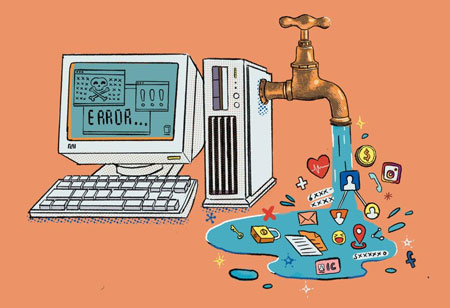THANK YOU FOR SUBSCRIBING
Be first to read the latest tech news, Industry Leader's Insights, and CIO interviews of medium and large enterprises exclusively from Food and Beverage Tech Review
What are the Possible Ways To Get Rid of Cyber attacks in Food Safety?
Investing in cybersecurity is key to risk management processes to protect food companies from possible attacks.

By
Food and Beverages Tech Review | Friday, August 21, 2020
Stay ahead of the industry with exclusive feature stories on the top companies, expert insights and the latest news delivered straight to your inbox. Subscribe today.
Investing in cybersecurity is key to risk management processes to protect food companies from possible attacks.
Fremont, CA: As technology penetrates all industries, the number of cyber-threats to these industries grows simultaneously, and the food industry is no exception to this. And it is the production chain in the food industry that is highly susceptible to cybercrime. Although the food industry is not a target of costly cyber attacks like financial, healthcare, and other sectors have, the attackers are looking for easier victims. Food companies lack sufficient knowledge about how their industrial control systems and IT systems interact. Further, they lack awareness about cyber risks and threats, where it becomes essential for food companies to begin protecting themselves.
Similar to practices used to identify and address food-processing risks, such as pathogens and foreign materials, methods for protecting essential data for processing are the same. These practices comprise evaluation of threats, assessment of occurrence probability, and mitigation of threats. The consequences of cyber attacks are substantial, including financial losses, business interruption, and lowering of reputation. The following ways can address the risk in food companies.
• Incorporate cybersecurity tech into food safety and food defense culture
• Monitor and protect critical control points
• Follow cyber policy to bridge the gap and facilitate more communication between OT (operational technology), PR, legal experts, and IT (information technology) personnel to get control of the crisis as quickly as possible.
• Maintain security zones to prevent threat migration
• Conduct risk assessments of inventory control systems and IT systems
• Conduct tests of risk points and the general environment regularly
• Ensure that staff with cybersecurity knowledge is involved in procuring and deploying inventory control system devices
• Keep sensitive data isolated to minimize access points
• Shift from on-premises system to a cloud-based food quality management system
CIOs of the food industry consider taking the above “critical” steps by investing in cyber-coverage as a part of your risk management process is vital as it is everywhere these days.
I agree We use cookies on this website to enhance your user experience. By clicking any link on this page you are giving your consent for us to set cookies. More info







